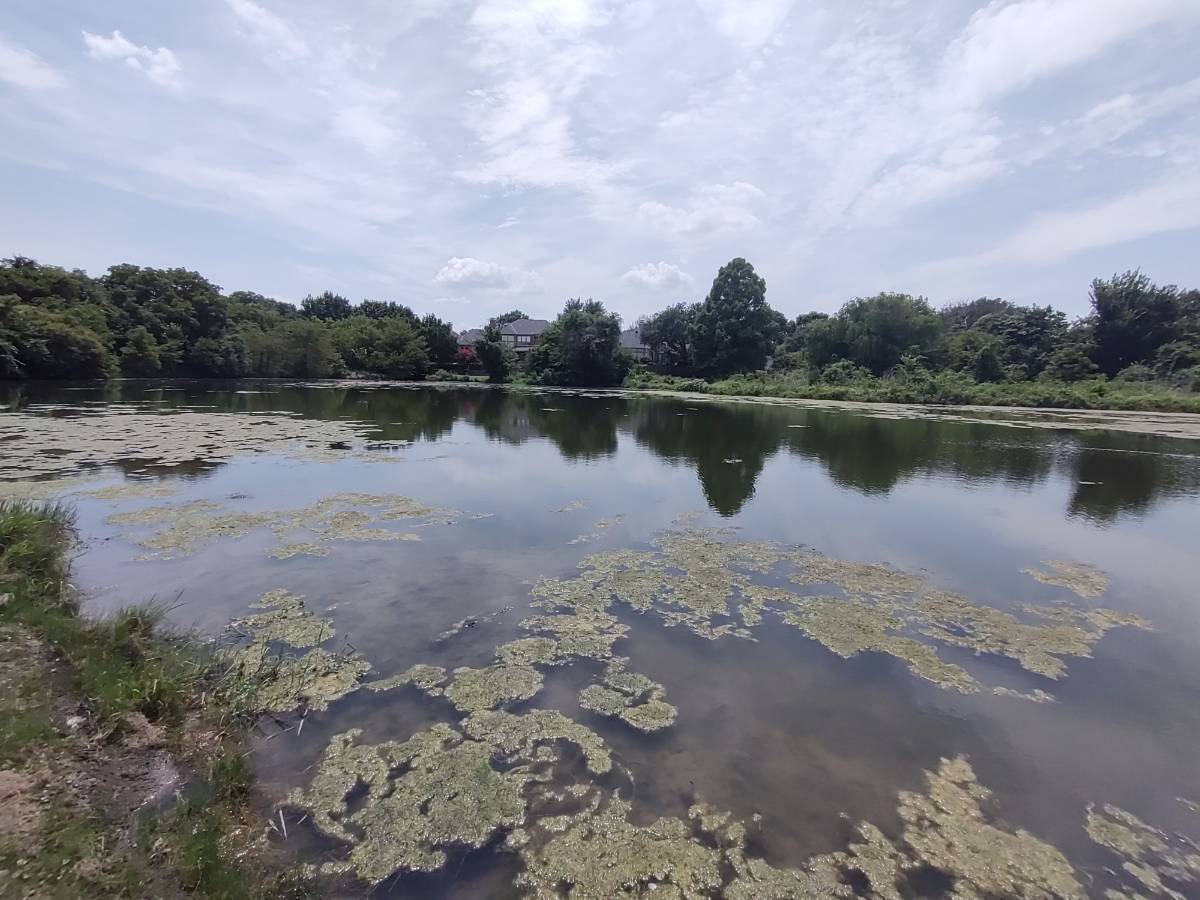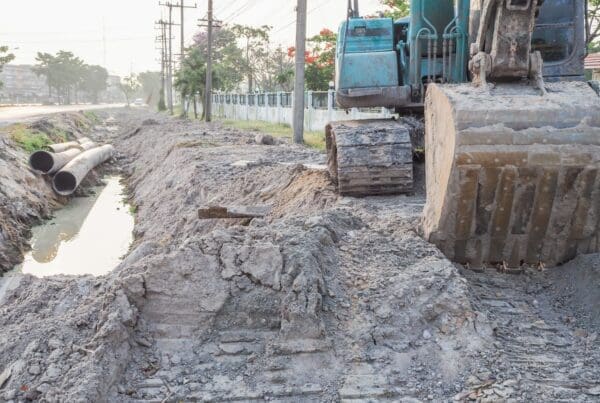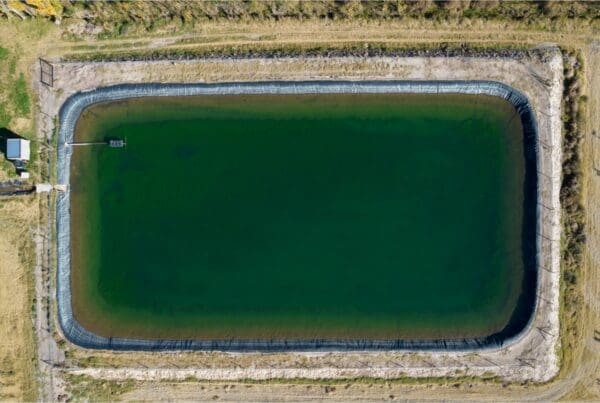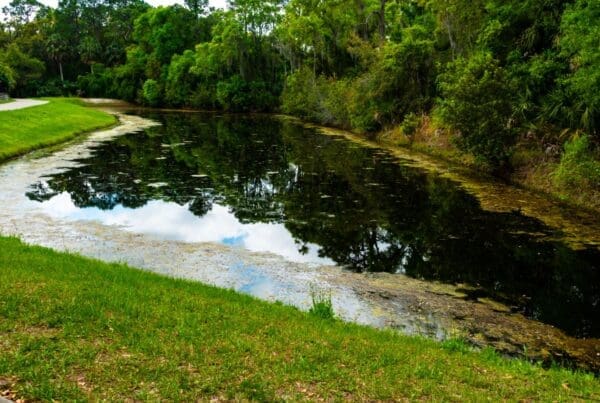The term “pond scum” refers to various types of algae that form into clumps in a pond, sometimes creating carpets of pond scum across the surface of the water. These floating weeds can come in different colors, ranging from green and blue to brown and violet.
In small quantities, pond scum is beneficial for the health of the pond water as it provides shelter and a food source for many different types of small fish, tadpoles, and insects. But when pond scum grows into large mats of algae as part of an algae bloom, it means that the pond’s ecosystem is starting to deteriorate as part of a process known as eutrophication.
What is Pond Scum?
While many different algae forms can create pond scum, the three most common types are collectively referred to as filamentous green algae. They are:
- Cladophora algae, which form long-haired, cotton-like clumps
- Pithophora or horsehair algae, which grows as thicker, coarser strands
- Spirogyra algae, which grows as bright green, slimy clumps that don’t have long identifiable strands
Another common pond scum outside filamentous algae varieties is cyanobacteria or blue-green algae. While it is more related to bacteria than algae, cyanobacteria can look like algae to the naked eye. Its appearance is like foam or scummy slime that creates a mat on top of the water. It tends to range in color from green and blue to brown and red.
Unlike small aquatic plants, pond scum does not grow roots, stems, or leaves. It can survive by attaching itself to solid objects like plants and rocks, or it may free-float without an anchor.
Identifying Pond Scum
Identifying whether your pond has algae or other aquatic vegetation is important for managing the pond’s health. You can conduct a simple touch test to determine whether or not it is algae.
Is it slimy when you touch it?
Many algae types have a slimy texture, so if a clump of pond scum, vegetation, or rock surface is slimy, it’s algae.
Does it have strands that mat together like hair?
Plant stems don’t mat and stick together as hair does, but strands from filamentous algae do.
Does it have a gritty texture?
A gritty texture likely means that you are handling a rootless aquatic plant known as watermeal that can look like algae from a distance.
What Is Eutrophication?
Eutrophication disrupts the natural balance of an aquatic ecosystem, leading to an algae bloom that can destroy the ecosystems in ponds and lakes if left unchecked.
When soil, plant debris, fish feces, fish food, agricultural runoff, and other organic compounds accumulate on the pond floor, they create a deposit of nutrients, beginning the eutrophication process. Although you will notice pond scum floating on the surface, it actually begins growing under the water on either the sides or the floor of a pond or lake. When there is an overabundance of nutrients on the pond floor from eutrophication, algae feed off and reproduce much faster than the ecosystem can control.
As the built-up organic material and pond scum decompose, it reduces the amount of oxygen in the pond, killing oxygen-dependent aquatic wildlife. Some pond scum, like cyanobacteria, release toxic chemicals into the water and disrupt the natural pH balance, making it even harder for wildlife to live in the pond.
If not rectified, eutrophication and algae blooms can render a pond unusable, lifeless, and toxic. It can also produce a foul odor that affects the wider area.
How Does Pond Scum Grow?
While pond scum requires sufficient nutrients to grow and become a problem, that is not the only factor. The algae and cyanobacteria that comprise pond scum are photosynthesizers, meaning they require at least partial sunlight in order to grow.
They also need warmer temperatures, so it is common for you to see increases in pond scum during the warmer months and for more extended periods in warmer climates.
While there is no exact formula for predicting when an algae bloom will occur, fertilizer runoff from agricultural sites and sewerage contamination both significantly increase the chances of one happening. Fertilizers and sewerage are nitrogen and phosphorus-rich sources, key ingredients for rapid algae growth.
Pond scum is made up of different types of algae and cyanobacteria that exist naturally as part of a healthy ecosystem. When exposed to an abundance of nutrients, thanks to eutrophication, sunlight, and warm temperatures, they can grow into algae blooms that damage aquatic ecosystems and wildlife. For more information on controlling and removing pond scum, contact Pond Medics today.




